3D printers & other equipment for the makerspace
The right equipment for every creative project!
Whether it's a 3D printer, scanner, laser cutter, cutting plotter or milling machine - you'll find everything you need for modern manufacturing and creative projects in our range. Versatile post-processing devices provide the perfect finishing touch, delivering a flawless surface and professional results. Ideal for makers, professionals and anyone who wants to give shape to their ideas!
Shop by category.
3D Printers & More: 1 - 30 of 181 items
-
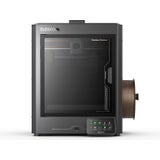
Elegoo Centauri Carbon
- CoreXY movement system
- Build volume: 256 x 256 x 256 mm
- Powerful AC heated bed
-

-
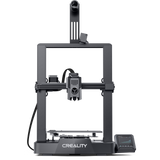
Creality Ender 3 V3 KE
- Build volume 220 x 220 x 240 mm
- Max. printing speed 500 mm/s
- Optimised “Sprite” direct drive extruder
-
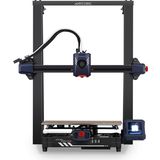
Anycubic Kobra 2 Plus
- 1.2GHz Cortex-A7 dual-core processor
- Dual gear direct drive extruder
- Dual Y & Z axis
-
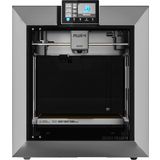
-

Prusa CORE One, Assembled
- CoreXY structure
- Closed chamber with active temperature control
- Automatic ventilation system
-
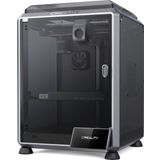
Creality K1C
- Build volume of 220 X 220 X 250 mm
- Max. printing speed of 600 mm/s
- All-metal direct drive extruder
-
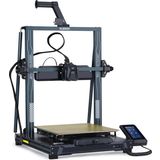
-
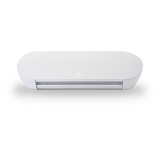
-
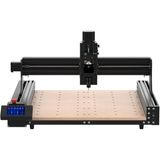
TwoTrees TTC450 CNC Milling Machine
- Robust construction
- Working area of 460 x 460 x 80 mm
- 80W standard spindle
-

Sovol SV08
- Build volume of 350 x 350 x 345 mm
- CoreXY motion system
- Max. acceleration of 40,000 mm/s²
-
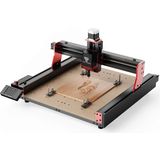
TwoTrees TTC450 Pro CNC Milling Machine
- Robust construction
- Working area of 460 x 460 x 80 mm
- Engraving accuracy of 0.05 mm
-

-

Creality Ender 3 V3
- Build volume of 220 x 220 x 250 mm
- Direct Drive Extruder with Unicorn Tri-Metal Nozzle
- Max. printing speed of 600 mm/s
-
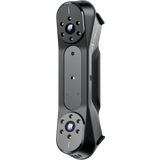
Creality CR Scan Raptor
- Lightweight & compact
- Accuracy of up to 0.02 mm
- Combines blue light laser & NIR
-

-
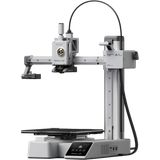
-
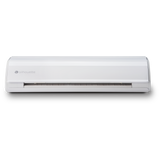
Silhouette Cameo 5, White
- White
- Matte Black
- Intelligent path technology
- Large variety of materials
- Quiet operation
-

-

-
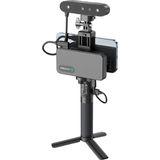
-
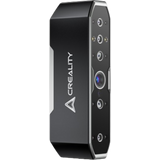
Creality CR Scan Otter
- Accuracy of up to 0.02 mm
- Two pairs of dual lenses
- 24-bit full-colour scanning
-
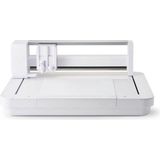
-
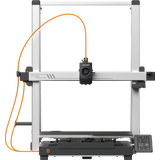
Anycubic Kobra 3 Max
- Build volume of 420 x 420 x 500 mm
- Print speed up to 600 mm/s
- LeviQ 3.0 auto-levelling
-

-
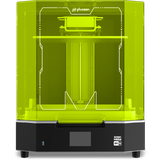
-

LDO Motors Voron V0.2-S1, Black
- Black
- Space Grey
- Blue
- Stainless steel linear rails
- With custom linear rail mounting bars
- E3D Revo Voron Hotend
-

LDO Motors Voron 2.4 300 RevD Kit, Black
- Black
- Space Grey
- Blue
- Red
- Build volume: 300 x 300 x 300 mm
- Incl. detailed instructions in English
- High-quality components
-

-

Anycubic Kobra S1
- Build volume of 250 x 250 x 250 mm
- Intelligent AI-supported monitoring
- User-friendly operation
Start your own makerspace - within your own four walls!
3D printers are no longer just used in industry: You too can benefit from this innovative technology! With a 3D printer, you can design your own jewellery, print spare parts, customise models or build cool gadgets for everyday use - all from the comfort of your own home. The possibilities are almost limitless - and easier to realise than you think.
Here you can find out what 3D printing actually is, how it works and what you need to know to get started!
How does 3D printing work?
There are two main methods of 3D printing: FDM printing (fused deposition modelling) and resin printing, also known as SLA or DLP printing. Both work additively, i.e. your object is built up layer by layer - but the technology behind them is different.
In FDM (fused deposition modelling) printing, your object is created layer by layer from molten filament. It all starts with a 3D model that you either design yourself (e.g. with Blender or Fusion 360) or download from an online database such as Thingiverse or Printables. Your 3D printer processes this file using slicer software, which divides the print path into individual layers. The printer then heats the filament, usually a thermoplastic material, and applies it to the print bed in layers via a heated nozzle. In this way, your model grows layer by layer. To keep the whole thing stable and still save material, the printer works with a grid structure (infill) inside your object. This allows you to save filament without compromising on stability.
Resin printing (SLA = stereolithography, DLP = digital light processing) works with liquid synthetic resin (resin), which is cured layer by layer under UV light. This gives you extremely fine details and smooth surfaces that are almost impossible to achieve with FDM printing. This is how resin printing works: Your 3D model is again broken down into layers using a slicer. The liquid resin is filled into a tank. While with SLA printers a laser hardens the resin with pinpoint accuracy, with DLP printers a projector exposes a complete layer at a time. The model is gradually created upside down on the building platform and the object slowly emerges from the resin bath. With resin printing, it is important to know that your model must be cleaned (e.g. in isopropanol) and post-cured (UV light or special curing stations) after the entire process to ensure that it remains stable and durable.
FDM printers are great if you want to print large, functional parts and value a more affordable system. Resin printers offer you maximum detail and the best surface quality, but involve a relatively large amount of post-processing. What do you think suits you better?
What can you do with a 3D printer?
The possible uses of 3D printers are impressively diverse. Here are a few ideas:
- Printing prototypes and functional samples,
- Spare parts and repair aids for the home,
- Making modelling parts and miniatures,
- Design jewellery and accessories yourself,
- Create architectural models and concept designs,
- design artistic sculptures or figures,
- develop practical gadgets for everyday life,
- and much, much more!
What you should look out for when buying a 3D printer!
Here are the most important factors you should consider when choosing an FDM 3D printer, in addition to quality:
► Print space: This indicates the maximum size of the print object. For beginners, 200 x 200 x 200 mm is usually sufficient.
► Open or closed installation space: For ABS & other high temp materials you often need a closed housing to avoid temperature fluctuations.
► Maximum print speed: This value indicates how fast the nozzle can move. However, the maximum value is only reached over longer distances. The printers usually travel slower than the maximum speed.
► Layer height (layer height): The smaller the layer height, the finer the surface. Standard: 0.2 mm, high-detail: up to 0.05 mm.
Spare parts & upgrades
Today, there is a huge selection of accessories and spare parts for most 3D printers. This allows you to customise your printer and adapt it to your projects as required. There are practically no limits to your creativity. And if something goes wrong while tinkering or upgrading: spare parts such as nozzles, heating beds, hotends or mainboards are quickly available so that your 3D printer is ready for use again in no time at all!
Ever-expanding range so that you can set up your makerspace in the best possible way!
But we're no longer just about 3D printers - even though we have plenty of them! We offer you a huge selection of technology with which you can fully equip your own makerspace. From 3D scanners and laser cutters to milling machines and cutting plotters, you'll find everything you need for your creative projects. You can combine all of these machines and perfectly harmonise your workflow. This turns your 3D printer workstation into a complete production station!
Magazine Articles:
Discover 3DJake:
-
Great Britain: Free standard delivery from £69.90
-
Free
returns More than 10.350 products
We deliver worldwide to
more than 40 countries







